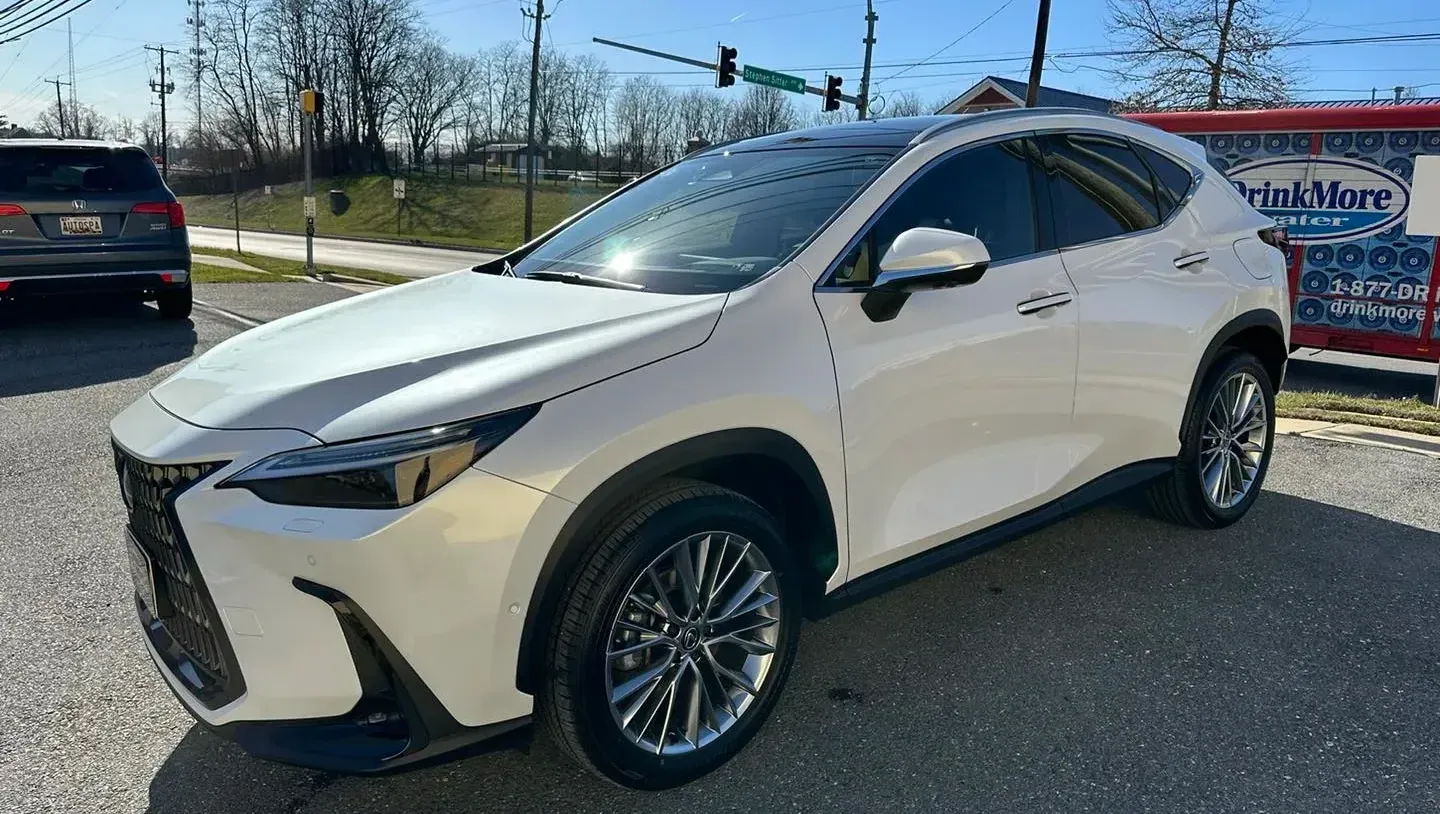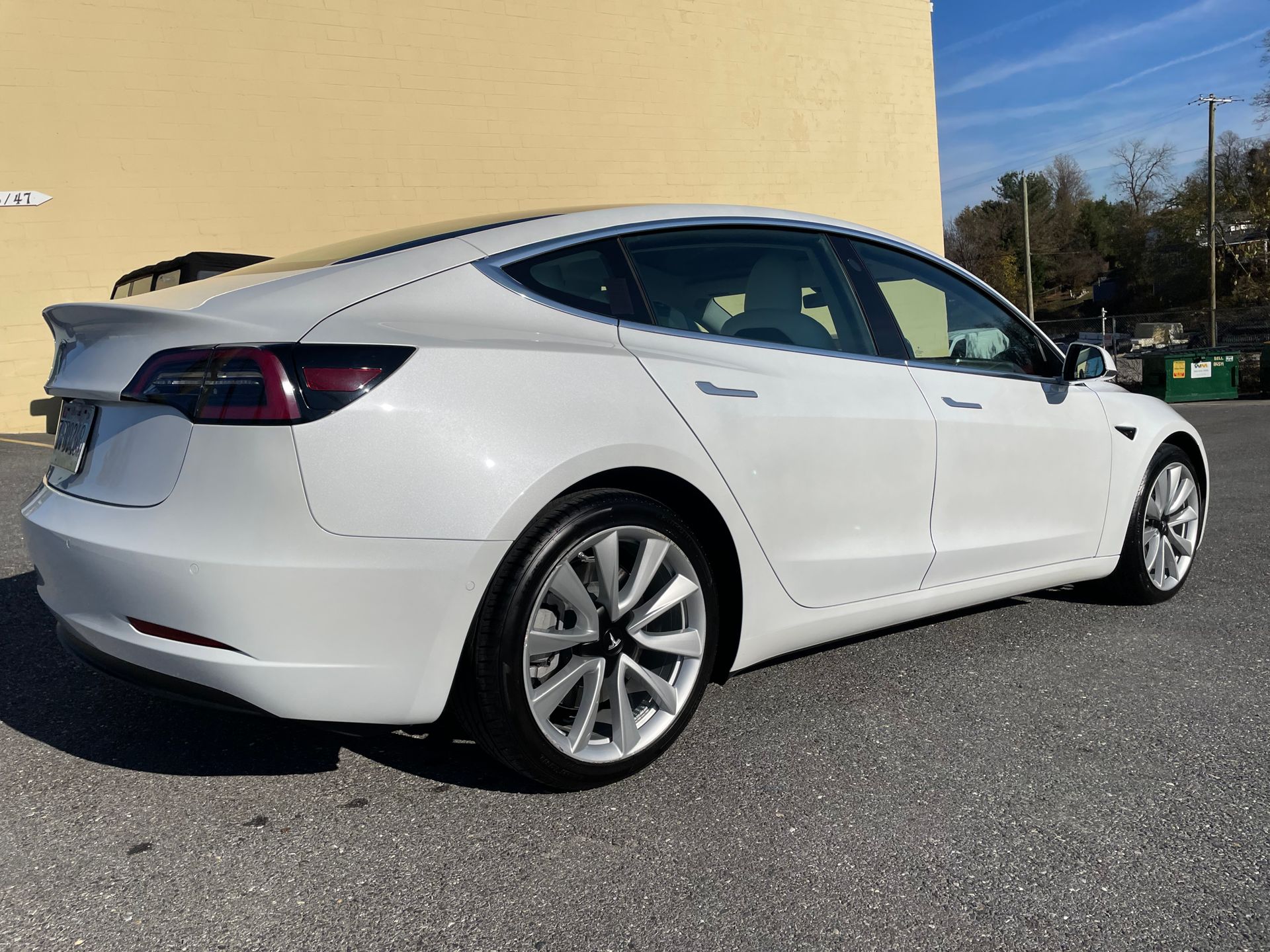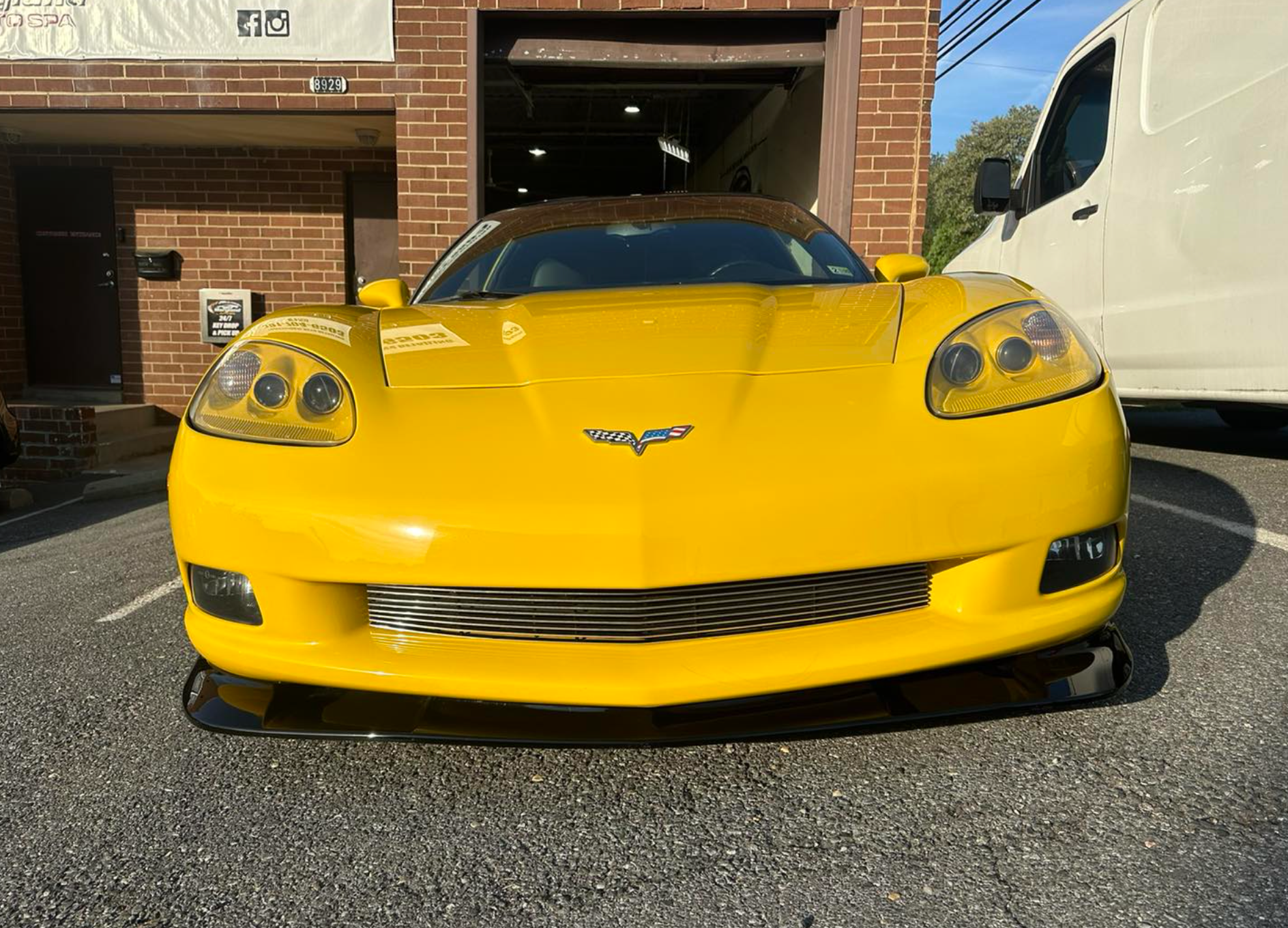Have you been curious about
ceramic coatings and how they work? Look no further! Ceramic coating is a popular option for automotive care and decoration, but like anything else, it has some misconceptions surrounding it. In this post, we aim to set the record straight on five of the most prevalent myths surrounding this popular choice. Whether you want to apply the ceramic coating yourself or just understand its operation better, this post will give you all the facts. So buckle up—we're going on an epic myth-busting mission!

Myth #1: Ceramic Coating Is Harmful to the Environment
This myth about ceramic coating often circulates, suggesting it's harmful to the environment. While this concern is understandable, it neglects some key facts.
Supporters of the myth assert that ceramic coatings, even though free from volatile organic compounds (VOCs), still present potential environmental hazards due to their caustic cleaning agents, which may contain hazardous polyfluoroalkyl substances (PFAS). However, when considering both production and application processes together, ceramic coatings still have a much lighter environmental footprint than traditional solvent-based ones.
An EPA-funded research group conducted a 2008 case study to compare polydimethylsiloxane (PDMS) coatings against solvent-based paint systems. The findings demonstrated that PDMS coatings, more commonly referred to as "ceramic" or "high solids," had significantly smaller environmental impacts in terms of VOC emissions and energy use compared with their traditional solvent-based counterparts.
Research has proven that ceramic coatings, when used properly and with careful consideration for end-of-life disposal options, do not significantly harm the environment. Now we need more facts to determine how it impacts the environment when used long-term in different settings - which, fortunately, will be addressed in our next section!
Facts about the Environment
Ceramic coatings have an impact on the environment, just like any other automotive product does. Unfortunately, many people mistakenly assume that ceramic coatings are more hazardous to the environment than wax. Here is what actually occurs when this product interacts with nature:
Ceramic coating is composed largely of natural compounds, making it more eco-friendly than synthetic waxes that utilize chemicals and petroleum distillates. As with all car products, proper disposal of ceramic coatings and their containers is crucial in order to minimize any potential environmental impacts.
Ceramic coatings have several environmental advantages over traditional waxes, including their extended longevity and need for less application, which cuts down on energy used during application and production. Furthermore, some studies have revealed that long-lasting ceramics contain far fewer toxic components when broken down compared to short-term alternatives.
It's evident that ceramic coating has both environmental benefits and disadvantages when compared to traditional waxing methods. Regardless, proper disposal methods must always be observed when dealing with products like these. Now let us explore another misconception about ceramic coating: that it is long-lasting and durable compared to other waxing options.
Some Facts:
- Ceramic coatings bind to the paint molecules and are much more resistant to UV light degradation compared to waxes and sealants, which can break down in direct sunlight.
- Studies have demonstrated that ceramic coatings offer up to 10x greater durability than traditional sealants, enabling them to protect for two or more years with proper care and upkeep.
Myth #2: Ceramic Coating Is Longer-Lasting Than Waxes
This myth about ceramic coatings is one of the most disputed, as many people claim they last longer and are more economical. While wax can last 9-12 months, high-quality ceramic coating should outlive it by far; With proper care and application by a professional service technician, your ceramic coating could last anywhere between 5 and 10 years, depending on environmental conditions and the proper care taken. While upfront costs with ceramic coating may be higher due to professional application and ease of cleaning afterward, you end up making financial sense over time with these investments in terms of savings in the long run.
Ceramic coatings also possess anti-corrosive qualities, preventing oxidation without harming a car's paintwork in any way. With regular upkeep and cleaning, ceramic surfaces exhibit superior hydrophobic properties, which shield against water spots, UV light rays, and dirt accumulation.
On the downside, waxes are prone to wear and must be reapplied every 9-12 months unless using a product with longer durability, such as some synthetic sealants. With time, a waxed surface may become less slick while still looking shiny, eventually needing rewaxing. Furthermore, since wax contains no special protective ingredients, it's vulnerable to weathering, especially in extreme cold or heat which causes it to break down quickly.
Myth #3: Ceramic Coating Provides Longer-Lasting Paint Job
Another myth to dispel is that ceramic coating leads to a longer-lasting paint job. Some argue that wax only lasts around one month before needing reapplication, while the right ceramic coat offers protection for years at a time. While this may be theoretically true, maintaining your car's paintwork with a ceramic coat requires regular upkeep, just like waxing! In order to maintain its shiny new look after applying a ceramic coat, make sure it gets cleaned regularly and keeps all edges intact for optimal longevity benefits from its new coat!
On the contrary, some experts contend that wax is more effective at protecting paint jobs since it adheres to the car's clear coat instead of simply sitting atop it as ceramic coating does. That being said, the ceramic coating has been successfully employed as an exterior protective layer on cars for decades; many automotive professionals vouch for its effectiveness against debris accumulation as well as environmental stresses like UV exposure and road salt.
Wax and ceramic coatings both have their advantages and drawbacks when it comes to long-term paint protection, but there can be no doubt that ceramic coatings provide an additional layer of defense that should not be overlooked. From increased gloss retention to prolonged cleanliness benefits, ceramic coating finishes are here for good.
Now that we've dispelled some myths about ceramic coating for cars, let's examine the real advantages this protective service can provide.
Benefits of Ceramic Coating
Car owners interested in protecting the exterior of their vehicles should seriously consider a ceramic coating. Studies have demonstrated that it shields a car's paintwork from harsh elements and UV rays, which may fade or cause corrosion over time. Furthermore, its hard-coated protective layer provides superior resistance to wash-induced scratches, keeping your car's finish looking new even after multiple washes. Maintaining your car's exterior becomes much simpler with ceramic coating since dirt, brake dust, and other particles won't adhere to coated surfaces as easily, leading to fewer trips to the local car wash shop!
Regarding longevity, some car owners may prefer traditional paint jobs. After all, these coatings are designed with long-term durability in mind. Compared to traditional automotive paint jobs, ceramic coatings provide superior protection from environmental elements. Ceramic coatings offer an additional layer of protection from UV degradation and certain types of corrosion that regular paints cannot provide. While it may not be a perfect substitute for a full paint job, ceramic coatings offer considerable value in terms of protection and durability for those seeking an inexpensive way to extend the life of their vehicle's protective finish.
Ceramic coating has become an increasingly popular option for car owners seeking the most out of their vehicles due to its numerous benefits and long-term cost-saving potential. Furthermore, since it can often be applied over existing wax coatings or sealants, investing in the ceramic coating can be an easy DIY project that upgrades your car's protection. However, remember that proper application requires great care and precision—always read up on instructions carefully!
Before making a decision, it's essential to comprehend all sides of this myth. Ceramic coatings offer superior protection from harsh environmental conditions like UV damage or corrosion, no matter how severe they may be. That being said, applying a ceramic coating to your vehicle's exterior doesn't eliminate all myths; there are still others about maintenance requirements that need to be dispelled if you're thinking about giving this automotive protective solution a try.
Myth #4: Maintaining Ceramic Coating
The misconception that maintenance is required after applying the ceramic coating is widespread, but research indicates that maintenance requirements for ceramic coating are minimal compared to traditional waxing and the chemical protection it provides. Some even contend that washing, polishing, and waxing traditional car paint with a ceramic coating can affect its hydrophobic properties.
However, many ceramic coating manufacturers recommend maintenance products such as spray sealants or quick detailers, which, when used regularly, can help restore and preserve the glossy finish and hydrophobic benefits provided by a good-quality ceramic coating.
At the same time, proponents of traditional detailing methods argue that regular washing, claying, and waxing not only preserve but enhance a vehicle's paint. On the contrary, ceramic coatings require special care due to their chemical composition, which may not always be true. Ultimately, it comes down to personal preference as well as financial resources, which will determine which approach best meets individual needs.
Ceramic coatings offer an attractive combination of quality appearance and time savings on detailing, but it's essential to assess individual needs to determine if these applications offer value for money compared to other available choices. Now let us address the fifth most common misconception about ceramic coating: its cost-effectiveness.
Myth #5: Ceramic Coating Is Expensive
The cost of the ceramic coating varies based on factors like the type of product selected, how large an area needs covering, and the labor involved in the application. But considering all the long-term advantages it provides, most people consider ceramic coating a sound investment.
Ceramic coating has several benefits. First and foremost, it reduces the frequency and intensity of chemical washing and polishing a vehicle's body, meaning fewer maintenance visits for detailing services as well as using fewer chemical products to do so. Furthermore, it extends the life of paint jobs by protecting against different surface damages. Plus, regular soap and water cleaning remain effective after ceramic coating application, making this an economical long-term decision in the long run.
Not to mention, ceramic coatings come in a range of prices depending on their properties and quality. Some products are very budget-friendly, while others may be more costly but provide superior protection. DIY kits for application by yourself or professionals at lower costs are also available if you prefer doing it yourself instead of hiring an expert. In the long run, however, any extra upfront expense will pay off with lower maintenance expenses and longer-lasting protection over time.
High-end ceramics may be more costly in the short term than cheaper sealants or waxing services, but their long-term benefits outweigh any associated costs. Investing in a quality ceramic coating product is an economical decision that leads to reduced maintenance expenses and an enhanced look for your vehicle.
Discover the truth about ceramic coating! Don't be misled by common myths.
Contact Maryland Auto Spa, your trusted source for ceramic coating expertise. Call us at (301) 704-6503 to learn more or schedule an appointment. Don't let misinformation steer you wrong—get the facts from the professionals at Maryland Auto Spa today!




